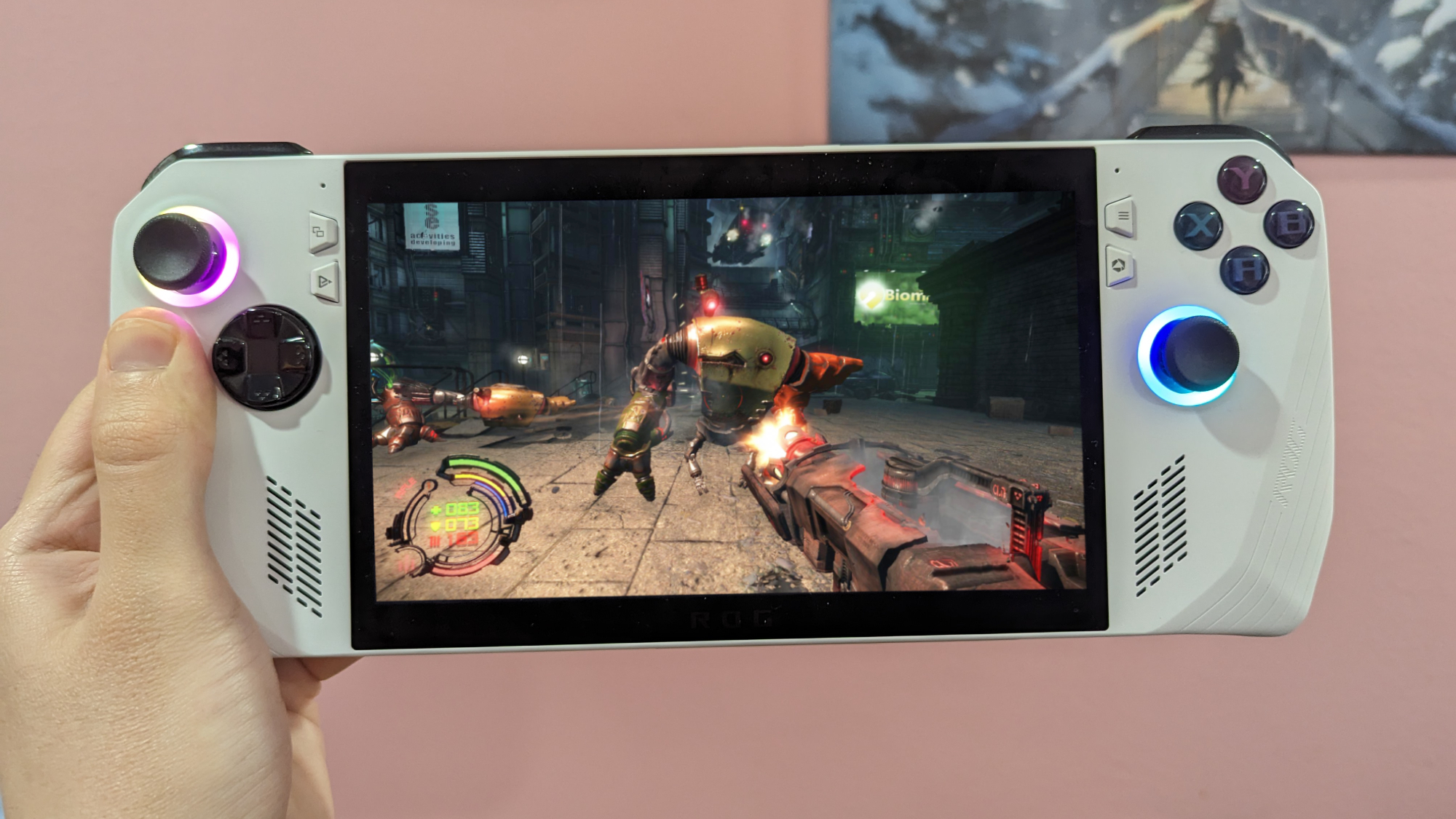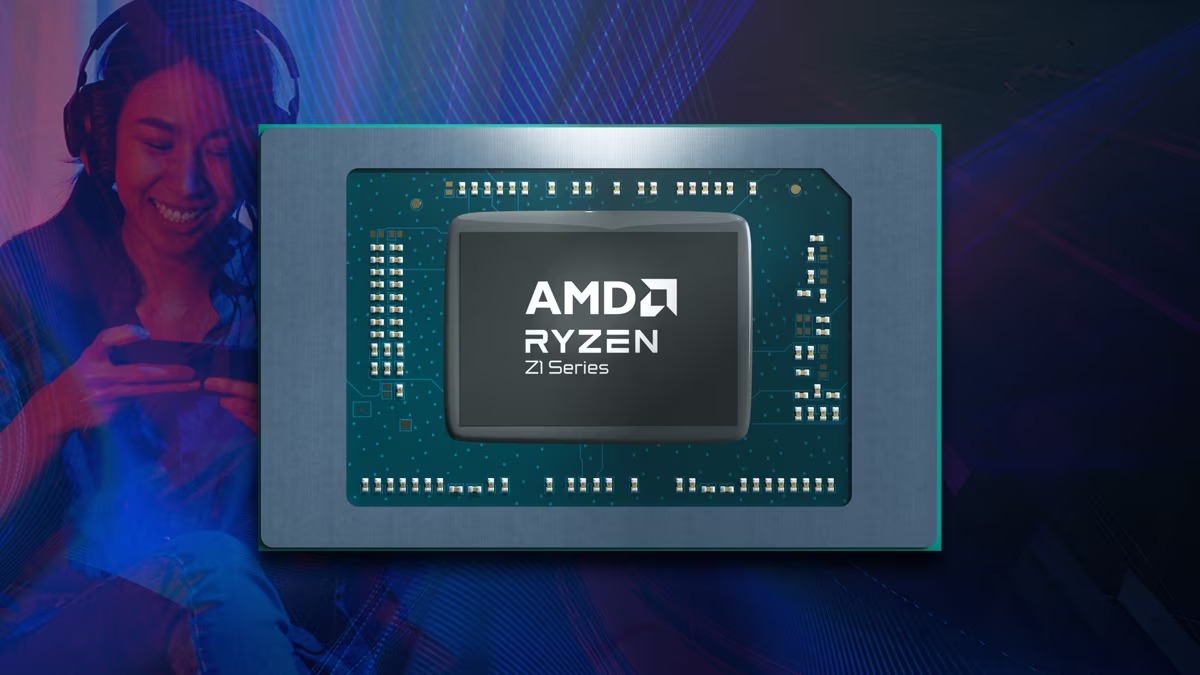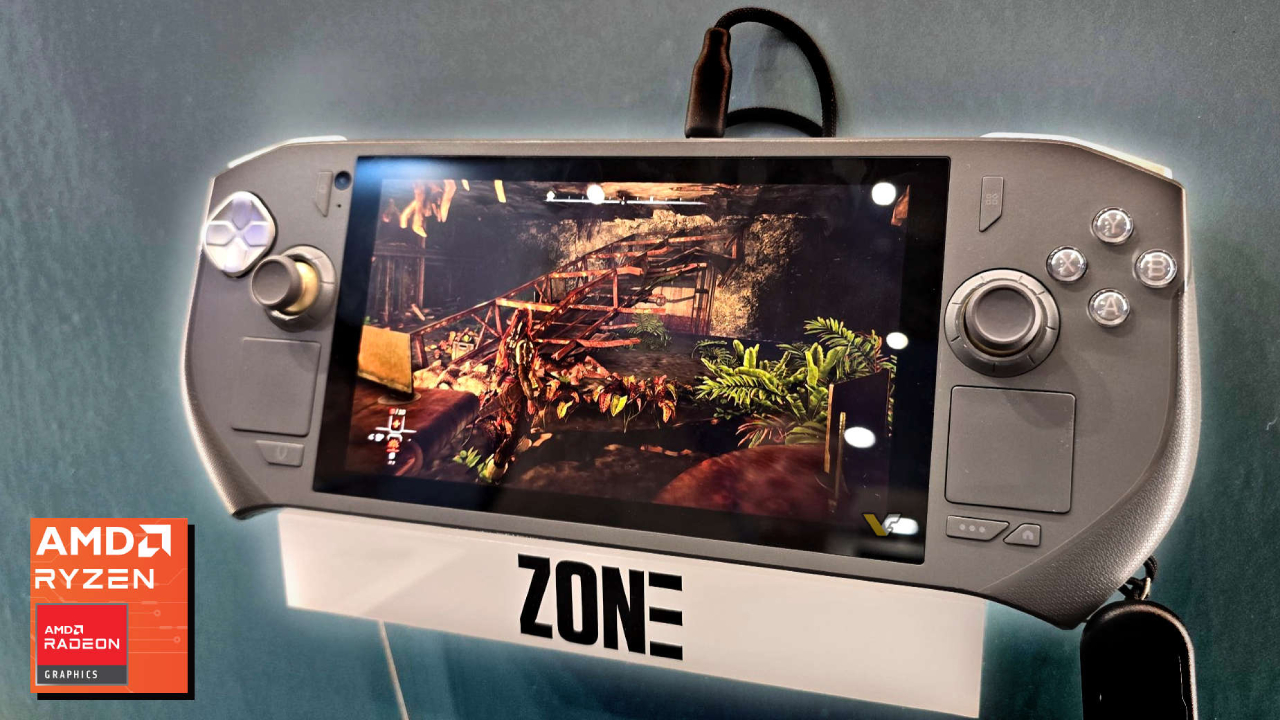
As Windows gaming handhelds grow in popularity — four new ones were unveiled at Computex last week in Taiwan — manufacturers and consumers need to think more about battery life.
Battery life on Windows gaming handheld consoles has been a sore point for the hardware since it became popular last year. In Laptop Mag’s battery test, the Asus ROG Ally’s 40Wh battery lasted one hour and 43 minutes while running the 3DMark benchmark until the system died.
From my tests running modern games, that number gets closer to an hour, and it’s frustrating to constantly need to connect to an outlet.
Its competitors have bigger battery sizes, at least. The Lenovo Legion Go has a 49.2Wh battery, the Steam Deck has a 50Wh battery, and the MSI Claw has a 53Wh battery. But size isn’t everything, especially when dealing with different processors.
The MSI Claw’s battery only lasted 1 hour and 22 minutes during a battery test by 3DMark, a benchmarking service for gaming. Even with a larger battery, it couldn’t stand up to the Ally, nor the Lenovo Legion Go’s one hour and 59 minutes
The difference is that the Claw features an Intel Core Ultra 7 155H processor, while the Legion Go and Ally are built with an AMD Ryzen Z1 Extreme. The Intel chip might not inherently be worse at power efficiency, but how the Claw implements it, at the very least, did not bode well in our tests.

I always use my Ally tethered to an outlet due to how quickly it dies. And it doesn’t last long before its juice is drained on the go.
With the announcement of the Asus ROG Ally X and MSI Claw 8 AI Plus during Computex 2024, it was unveiled that they are upgrading to an 80Wh battery. For the Ally, the jump from 40Wh to 80Wh is massive. If you make a rough calculation and double our results from our gaming battery test, that could mean 3 hours and 26 minutes of longevity.
See also: Every Windows gaming handheld announced at Computex 2024
That still might not seem like a long time, especially if you’re someone who plays all day. But if the Ally can last more than three hours, it will do far better at accommodating on-the-go trips and outdoor gaming sessions. I always use my Ally tethered to an outlet due to how quickly it dies. And it doesn’t last long before its juice is drained on the go.
Gaming handheld manufacturers making such a leap in battery size indicates an understanding of the necessity of longevity, but that’s not the case at every company — at least not in execution, anyway. So if you’re getting into the market, you should keep an eye out for battery size.
Gaming handhelds need longevity
The recent announcement of the ZOTAC ZONE — though acclaimed by some critics — is worrying if you’re focused on battery life. It’s built with a 48.5Wh battery, and while that is consistent with the previous generation of handhelds in battery size, it’s far less than what it will be competing against in the future: 80Wh batteries from huge manufacturers like Asus and MSI.

There’s no reason not to invest in something with a larger battery if the two devices are similarly priced and have similar specs.
The only potential saving grace is in its AMD Ryzen 7 8840 processor, as the Ally X will still use an AMD Ryzen Z1 Extreme. If there are massive differences in power efficiency, it could give the ZONE an edge. However, I’m not hopeful, as both feature the same AMD Radeon 780M integrated graphics and similar specifications.
If the power efficiency between the two is consistent, and the ZOTAC ZONE’s rumored launch price of $800 is true (which is how much the Ally X costs), the difference in battery life will make or break its success.
Buyers need to pay close attention to details like these. Portability may not be what most look at initially, as the focus will be on the display, processor, design, and ergonomics, but it is a vital part of mobile gaming. Even if you intend to mostly play at home, there’s no reason not to invest in something with a larger battery if the two devices are similarly priced and have similar specs.
On the other hand, long-lasting battery life isn’t a necessity for everyone. Some enjoy their gaming handheld tethered to an outlet at all times, as this allows for the use of higher-performance presets that consume battery life faster. And if you use a portable power brick to keep your device charged on the go, its built-in battery life might not matter much.
If that’s the case for you, an 80Wh or 48.5Wh battery won’t make much of a difference in practicality. But if you’re an on-the-go gamer who wants some extra juice, don’t settle for less.
Outlook
Gaming handhelds should prioritize larger batteries to support greater longevity. Size may not be everything, but when many of these devices feature the same hardware and run the same operating system, the difference between the ZONE’s 48.5Wh battery and the Ally X’s 80Wh battery could be massive.
Unless the hardware makers are using a smaller battery to offer competitive pricing that beats other gaming handhelds, battery size ought to be a focus for manufacturers.
Power is great and all, but if you can't feel secure in the portability of your portable gaming device, what's the point?







